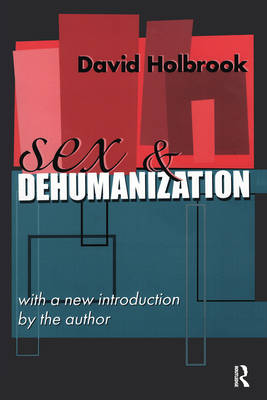
- Afhalen na 1 uur in een winkel met voorraad
- Gratis thuislevering in België vanaf € 30
- Ruim aanbod met 7 miljoen producten
- Afhalen na 1 uur in een winkel met voorraad
- Gratis thuislevering in België vanaf € 30
- Ruim aanbod met 7 miljoen producten
Zoeken
Omschrijving
Never before published in the United States, David Holbrook's study offers the sort of common sense all too uncommon in this area of study. His essential premise is that sex has become converted from an instrument for the expression of happiness and affection into an end unto itself. In the search for sexual liberation, all that has been accomplished is the mechanization of sexuality and the destruction of the full range of emotions that nourish the human search for social and biological meaning. Sex and Dehumanization is one of those rare books that will immediately strike the reader as part of the common wisdom that has somehow been lost in a search for the pleasure principle unhinged from other values and goals.During the past quarter century, Holbrook argues, not only has the concept of sex become increasingly separated from the rest of existence, but sex casualties have increased disastrously. The spread of AIDS has brought an ominous and deadly manifestation of this thesis into the human equation, yet at the same tune the response to this menace has been nothing short of manic denial. A similar picture emerges in less deadly forms. Whatever statistics one examines, whether those of sexual activity among young children, abortion, or sexual disease, one finds a grim antidote to any hopes of progress in the sphere of human dealings with the sexual. Holbrook locates many of the problems involved in this separation of sex and affection in the emergence of the idea that our lives are governed by impersonal forces beyond human control.Sex and Dehumanization is in the great tradition of social history and psychiatric analysis. Robert Nye, writing in the Scotsman, says that "Holbrook's diagnosis of our unease should be attentively studied by all who really care about sex and love and the responsibility of freedom." Gabriel Pearson, in the Guardian echoes this sentiment, adding that "never has such a secular ethic been so firmly and urgently and usefully stated." And John Rex sees the book "as containing the germs of important and central moral discussion."
Specificaties
Betrokkenen
- Auteur(s):
- Uitgeverij:
Inhoud
- Aantal bladzijden:
- 248
- Taal:
- Engels
Eigenschappen
- Productcode (EAN):
- 9781138532434
- Verschijningsdatum:
- 29/03/2018
- Uitvoering:
- Hardcover
- Formaat:
- Genaaid
- Afmetingen:
- 152 mm x 229 mm
- Gewicht:
- 503 g

Alleen bij Standaard Boekhandel
+ 549 punten op je klantenkaart van Standaard Boekhandel
Beoordelingen
We publiceren alleen reviews die voldoen aan de voorwaarden voor reviews. Bekijk onze voorwaarden voor reviews.











